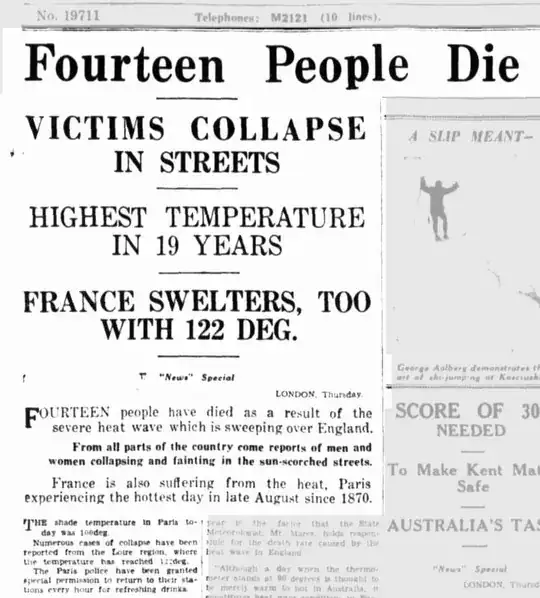The 1930 measurement was taken incorrectly.
The claim was also made in domestic newspapers at the time, including L'Express du Midi:
50° AU SOLEIL A SAINT-ETIENNE
Saint-Etienne, 27 août. Le thermomètre a marqué aujourd'hui 50° au soleil. Mme Guilly, 40 ans, est morte frappée d'insolation.
A rough translation of this is
50° IN THE SUN IN SAINT-ETIENNE
Saint-Etienne, August 27th. The thermometer today measured 50° in the sun. Mrs. Guilly, 40, died of sunstroke.
Note the key phrase "in the sun". (The paper you mention explicitly states that the Paris temperature recording was made in the shade, as opposed to direct sunlight.) None of the newspapers give additional information about the measurement (e.g. how long the thermometer was exposed for, was it near other heat sources, etc.). Without knowing whether the reading was contaminated, it seems unfair to claim that the measurement then should get the record. Indeed, if the measurement was taken in the Sun, that should make the measured temperature hotter than the actual air temperature, contaminating the dataset. It's recommended to place a thermometer in the shade for accurate temperature measurements - and the Saint-Etienne reading did not, apparently, come from that.
In particular, an official temperature measurement should use a thermometer in a Stevenson screen (thanks, David Hammen). The ideal height is 1.25 to 2 meters off the ground, and the instrument should obviously be placed in an area that has the same average temperature as the region it's trying to represent. L'Express du Midi implies that a Stevenson screen was not used at Saint-Etienne, and it's quite possible that other modern recommendations were not obeyed. Notably - and ironically - the Watts Up With That article does show a thermometer in a Stevenson screen, as it should be. Official temperature measurements use Stevenson screens.
It's also worth noting that none of the temperature record I've found for Saint-Etienne from 1930 shows this data point; indeed, it seems that the temperature didn't deviate from the average significantly. While June seems to have been one of the hottest months on average that year, there's no enormous outlier shown - possibly because the measurement was likely performed incorrectly.
Additional sources: Fake Investigation, ClimateState.com
